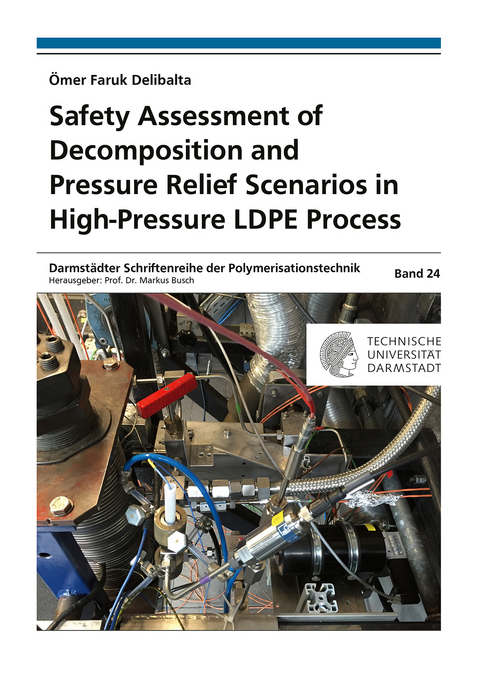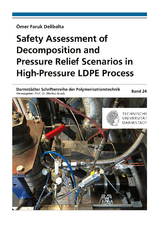Safety Assessment of Decomposition and Pressure Relief Scenarios in High-Pressure LDPE Process
Seiten
Pressure Relief systems are used to protect pressure vessels and related equipment against situations of excess pressure. In an emergency situation, they should vent sufficient mass to reduce the pressure to a save level, so the development of relief device sizing methods is of extreme importance.
To get more insight, decomposition and pressure relief phenomena are investigated by fast measurement technique using lab scale autoclaves designed for pressures up to 500 MPa. High-sensitive piezoelectronic sensors and custom made double typ-S-thermocouples with high response characteristic are implemented in the reactor to measure the flame front propagation as well as pressure relief trajectories. A one phase flow nozzle model is utilized to calculate the maximal mass flux at supercritical conditions and to characterize the pressure and temperature behavior of an isentropic relief system. Geometry, friction and heat transfer effects are considered by a discharge coefficient. The kinetics and thermodynamics of vinylacetate and ethylene decomposition are described by a combustion model including the laminar burning velocity and adiabatic flame temperature. A compartmentalization of the burned and unburned volume allows the prediction of a time-dependent flame front propagation and mass conversion considering turbulence effects. Chromatographic and spectroscopic methods are adopted to provide sufficient data for structural modeling. Combining the experimental and numerical methods, overall scenarios of decomposition and pressure relief phenomena could be visualized for various operating conditions.
To get more insight, decomposition and pressure relief phenomena are investigated by fast measurement technique using lab scale autoclaves designed for pressures up to 500 MPa. High-sensitive piezoelectronic sensors and custom made double typ-S-thermocouples with high response characteristic are implemented in the reactor to measure the flame front propagation as well as pressure relief trajectories. A one phase flow nozzle model is utilized to calculate the maximal mass flux at supercritical conditions and to characterize the pressure and temperature behavior of an isentropic relief system. Geometry, friction and heat transfer effects are considered by a discharge coefficient. The kinetics and thermodynamics of vinylacetate and ethylene decomposition are described by a combustion model including the laminar burning velocity and adiabatic flame temperature. A compartmentalization of the burned and unburned volume allows the prediction of a time-dependent flame front propagation and mass conversion considering turbulence effects. Chromatographic and spectroscopic methods are adopted to provide sufficient data for structural modeling. Combining the experimental and numerical methods, overall scenarios of decomposition and pressure relief phenomena could be visualized for various operating conditions.
| Erscheinungsdatum | 11.03.2023 |
|---|---|
| Reihe/Serie | Darmstädter Schriftenreihe der Polymerisationstechnik ; 24 |
| Verlagsort | Düren |
| Sprache | englisch |
| Maße | 148 x 210 mm |
| Gewicht | 304 g |
| Themenwelt | Sachbuch/Ratgeber ► Natur / Technik ► Technik |
| Technik ► Maschinenbau | |
| Schlagworte | Decomposition • Flame front • low-density polyethylene • pressure relief • Thermal stability • vent sizing |
| ISBN-10 | 3-8440-8977-2 / 3844089772 |
| ISBN-13 | 978-3-8440-8977-6 / 9783844089776 |
| Zustand | Neuware |
| Haben Sie eine Frage zum Produkt? |
Mehr entdecken
aus dem Bereich
aus dem Bereich
die wichtigsten Begriffe, Bautypen und Bauelemente
Buch | Softcover (2024)
Prestel (Verlag)
CHF 44,75
Buch | Hardcover (2021)
C. Bertelsmann (Verlag)
CHF 25,20
vom Kolosseum über die Akropolis bis zur Alhambra
Buch | Hardcover (2023)
DK (Verlag)
CHF 29,90




